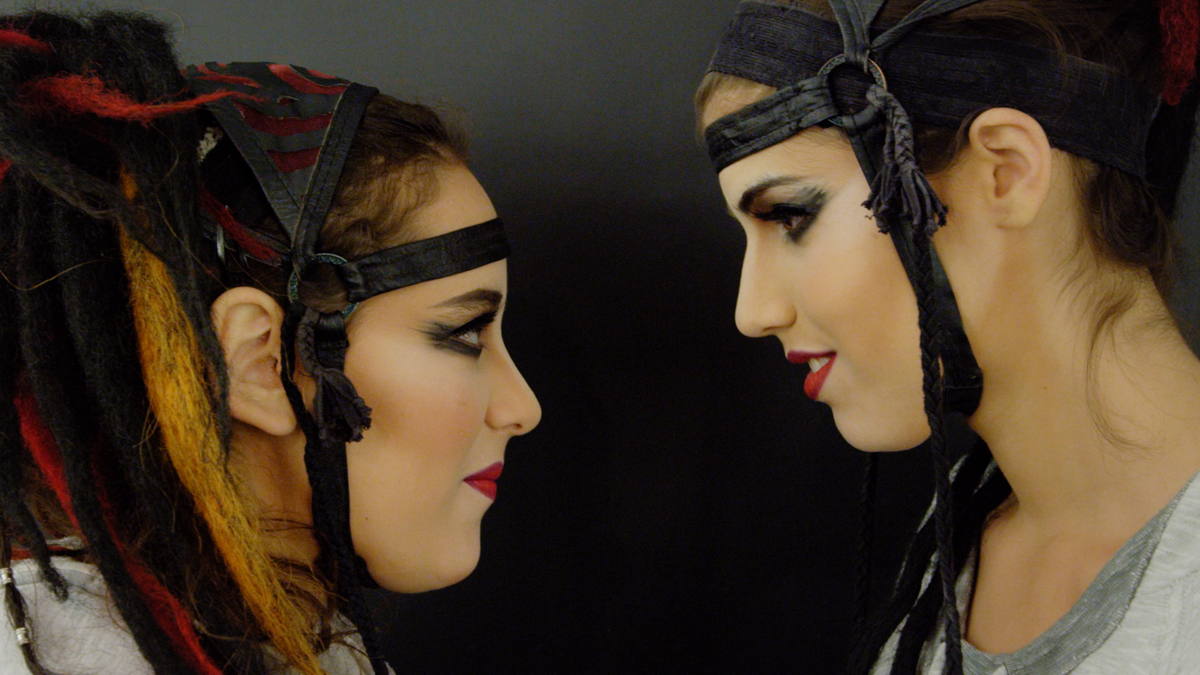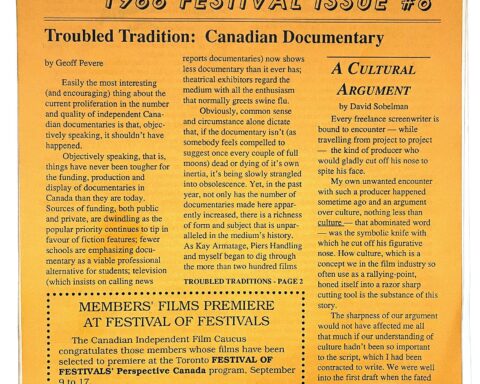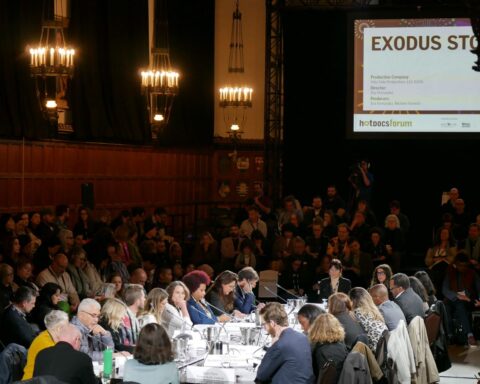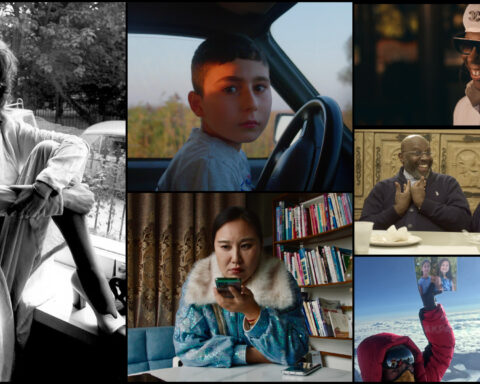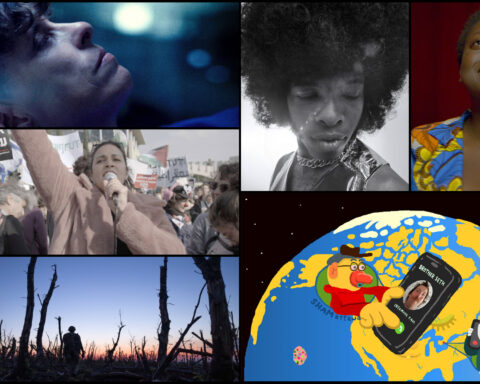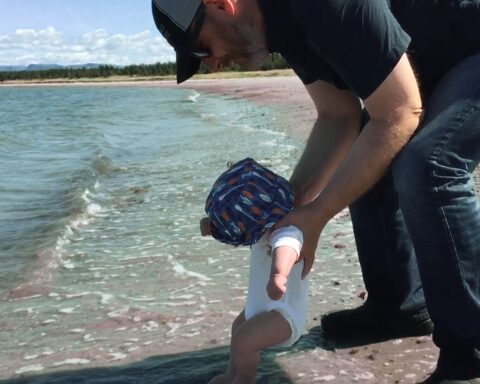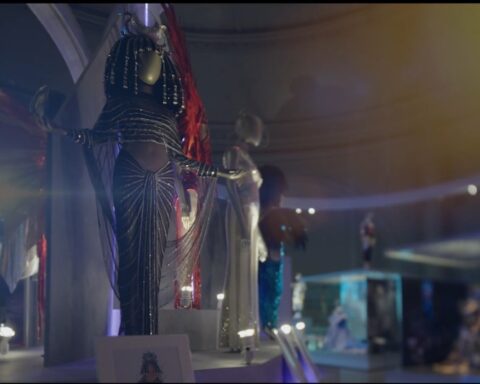How we talk about sexual violence is changing. The #MeToo movement, started in 2006 by activist Tarana Burke and re-popularized this past October, has developed our conceptions of harassment, assault and “misconduct,” which is far too mild to refer to something much more damaging than the simple mistake the term suggests. The initial reports on Harvey Weinstein by Jodi Kantor and Meghan Twohey in The New York Times, and Ronan Farrow’s follow-up in The New Yorker opened the way for more survivors to come forth. What seemed at first to be the story of a horrible man was, however, clearly the indication of a much larger problem, as more and more men in power—in the entertainment industry especially—continued to be called out.
The sexualized abuse of power by men in the film industry has been broached, and since then it has not quieted; rather, it has become a constant discussion. But how we tackle this issue has been entirely strained. The re-emergence of #MeToo has opened the way for survivors to publicly express the harm inflicted upon them, demonstrating the breadth of the abuse and harassment that has been endured. Public discourse on sexual violence has necessarily broadened.
This has been perplexing. With so many fresh conversations, we don’t have a coherent method of discussion; instead we have debates over meaning, history, facts and trauma. Yet, amidst difficulty, stress and the silencing of women is an expansion of voices, as more people come out with their experiences and articulate their perspectives. There have even been certain instances of change: the dropping of an actor from a film, a critic from an outlet, a producer from a company—all acknowledgements of inequality in the film industry, and movements toward a safe diversity. But these acts of change are a first step, and we remain confused about where to go next.
This year, Hot Docs offered its own form of public discourse. Proudly proclaiming that 50% of films screening are directed by women, the festival also contained a programme entitled The Silence Breakers, a selection of films featuring women speaking out against injustice. This showcase of women’s voices helps reveal how we deal with sexual violence in the #MeToo era. But the way #MeToo and the surrounding discussion have sprung up—suddenly, and strongly—has revealed to us that, more than ever, we do not possess a singular language to talk about sexual violence.
Slut or Nut: The Diary of a Rape Trial, directed by Kelly Showker, details the account of Mandi Gray, a Toronto student raped by her colleague. The central figure of the documentary, she informs us oncamera of the difficulty faced by survivors of sexual abuse in legal proceedings. Perhaps not new information, but, through Mandi, we experience the wait times, the condemnation and the judgement from an inside perspective. We hear her and others discuss how hard it can be to come forward and see the evidence of how women are kept silent. The title, referring to two ways to discredit a survivor—either by investigation of her sexual history, labelling her as a “slut” who wanted it, or by investigation of her mental history, confirming she is a “nut” and therefore unstable and unreliable—is a cheeky way of describing how women are actually made the villains in situations of sexual violence. This is the key to how the documentary deals with rape: with a sense of humour. [Read more about Slut or Nut in Kelly Showker’s filmmaker diary.]
Slut or Nut takes a perspective of lightness (scenes are padded by quirky illustrations and self-care platitudes), as well as an air of sarcasm and absurdity. Despite the gravity of the content, there is a constant recourse to levity, which often feels uncomfortable, as though it undercuts the discussion. Rape, sexual violence and harassment are not funny, and, despite the graphic details of Mandi’s experience and the horrifying accounts of how the courts refuse to help survivors, the issues sometimes seem like they aren’t taken seriously. Did we need cutesy cartoons and silly jokes to walk us through something like this?
Challenging us to understand, Gray quotes her friend Jane Doe, a famous rape victim: “When we see our rapists, we laugh, we roll our eyes, and we walk away. We cry when we get home and we’re alone and they don’t need to know our true selves.” To her, humour helps. Conversely, when Sarah Polley recently wrote about her experience in the film industry, she discussed a desire to make a comedy with other actresses about their experiences with assault in the industry, a project that was scrapped: “This is how we’d normalized the trauma, tried to integrate it, by making comedy out of it.” What is clear is that what works for one person may not for another. There is no right or wrong way to cope, but when that coping is no longer individual, but opened to the public, we have to witness how our methods of dealing with sexual violence are tricky in how meaningful they are to so many people, and how conflicting they feel to others.
Taking the issue of sexual violence as one of solemnity, Laura Bari’s Primas is completely different from Slut or Nut. The documentary depicts two teenaged cousins dealing with histories of violence as they grow up in Argentina. Rocío was kidnapped and brutally raped by a stranger who, thinking he had killed her, doused her in gasoline and set her on fire before abandoning her body. She survived. Her cousin Aldana was serially sexually abused by her father as a child and into puberty, when she finally moved out of his home. Each has to deal with the lasting trauma while simply continuing their lives.
Primas is not necessarily humourless, but it is clinical. If Slut or Nut is snarky and in-your-face, the style of Primas is serious and unobtrusive. Mandi speaks directly to the camera and drives the film. Rocío and Aldana are instead observed as they go through their daily lives, with interludes for lyrical narration or artistic representation of inner feelings. Primas does offer a sensitive and balanced portrait of the girls: they are complete people who experience and cope with trauma, but are never reduced to that trauma. They have outside interests, but aren’t afraid to demonstrate how badly hurt they have been, discussing explicitly the difficulty in having to behave like they are strong after so much violence. But the film leaves spectators with a feeling of a lack of agency. Unlike Mandi, the girls are not the ones guiding the filmmaking. Their voices are heard, but how much of their control is present? To what extent is the film’s story their story?
Taking different perspectives in their presentations of sexual violence, the films each have their successes and failures, and this reiterates the point that we lack a perfected vocabulary to talk about it, leading to instinctual responses. We feel ashamed, defensive and offended, and we feel moved, represented and empowered—sometimes we feel both sets of emotions simultaneously. We take what we can from these depictions and consider them with nuance and complexity in their diversity. But, despite showing two very different styles of documentary considerations of sexual violence—the brash and the sombre—these two films share one thing in common: confession. Slut or Nut is an edgy comedic take on the issue, with conventional documentary staples like talking heads, statistics and animations, while Primas is a subtle art film less intent on the informative and more interested in explorations of individuals; yet, in each film, women are the central figures, baring their souls to the audience.
Insofar as these are documentary films, presumably these are not characters: the women are experiencing the content of their confessions again when they cry, their voices breaking, as they struggle to speak of the things that happened. Despite different modes, confession has shown itself to be key to how documentary discusses sexual violence. And in a way it makes sense: the women in these films speak of their own experiences, which they explore in their films. But, disturbingly, we see how horrific this public confession can be—and perhaps we know for ourselves how hard it is to have to speak up, in such great detail. Mandi’s trial shows us how devastating it was for her to relive the trauma, only to be torn down publicly as an unreliable victim, and we watch stark changes in Rocío and Aldana’s temperaments as they begin to discuss their pasts, with the otherwise confident and affectionate girls suddenly unable to make eye contact with one another, holding back tears and trembling under the weight of their histories.
This brings us back to individual coping. Though documentary accommodates a variety of ways to cope, it does not accommodate for an absence of confession. While it may be therapeutic for some to discuss their trauma openly, it can be hell for others. Despite a diversity of expression, in documentary we see a repetition of women who must come forward themselves to re-explain these traumatic experiences, to varying levels of visible discomfort and pain. For many survivors this is a way to heal, but the imperative to expose oneself equally reveals that the burden of activism weighs heavily upon the survivor, who, to demonstrate that anything bad has happened, must expose all, relive the hurt and prove that the damage is real and lasting. It is not enough to say that there is a societal or an industrial problem: it must be expressed in the rawest, bloodiest way possible, by the individual most wounded.
It isn’t all about that pain, though. While these films emphasize a need for confession, in a way that leaves little room for privacy, they also, positively, bring up a need for support. Rocío and Aldana look to each other as they recover from trauma, gaining strength from their mutual love and understanding. Mandi Gray discusses the importance of campus groups and activist friends who could offer empathy in a time of great turmoil. And this is an element reflected across documentaries on the subject this year.
This idea of community is the basis of another Silence Breakers film, Irene Lusztig’s Yours in Sisterhood, a documentary in which women across America read letters written to Ms. Magazine in the 1970s. These letters often deal with the issue of community, some praising Ms. for broadening access to feminism and for making writers in remote areas feel less alone, and others denigrating the magazine for exclusionary feminism, particularly relating to intersectionality, with writers expressing their desire to hear more from other women of colour, queer women, disabled women and trans women. Both the positive and negative letters, however, bolster the importance of a form of sisterhood. The idea of The Silence Breakers itself, bringing together these voices to be heard during the festival, equally shows a need for solidarity that is being met for the first time at Hot Docs.
Yet it is hard to ignore the element of history in Yours In Sisterhood. Women in the present day read 40-year-old letters, and express how much they relate to the topics. When we think about how #MeToo has changed things, we can say that it has made issues more publicly present. And we can see the beginning of change on a broader level. But, painfully, we must be aware that it is not because these are new issues. While watching Yours in Sisterhood, we hear women in the early 1970s expressing the same struggles faced by women today. When we look to Mandi Gray’s case, we have to be aware that it took place before #MeToo had been re-popularized this fall, and when we look to Rocío and Aldana, we know their traumas took place years earlier. Attiya Khan’s A Better Man, a highlight of last year’s Hot Docs, explored Khan’s own history with domestic violence. Just a year later, it is hard to remember that this topic has already been prominent in the Canadian documentary community.
It is tempting to think of the events of the past half-year as revolutionary, even though we have evidence that sexual harassment and violence have always been an issue. While we can hope that this time there will be a major difference in terms of results, we have historically watched violent injustices be ignored and abusers be allowed to flourish, while we remained ignorant of (or actively ignored) how survivors had their livelihoods stamped out. Hot Docs this year is highlighting speaking out, and doing its best to help create fundamental change. Watching powerful films and talking about sexual violence as a longstanding institutional problem, we can hope to reach a more forthright way to understand, and bring about change.




